Brewing Beer with Chocolate Malt
Published: July 30, 2025 at 7:29:08 AM UTC
Brewing beer with chocolate malt can lead to a variety of flavors. These range from deep, complex notes to subtle coffee and nut hints. This ingredient is a go-to for brewers aiming to enrich their beers' taste. Chocolate malt can significantly boost the flavor of different beer styles. Whether you're new to brewing or have years of experience, mastering chocolate malt's use is essential. It's the key to crafting unique, tasty brews.
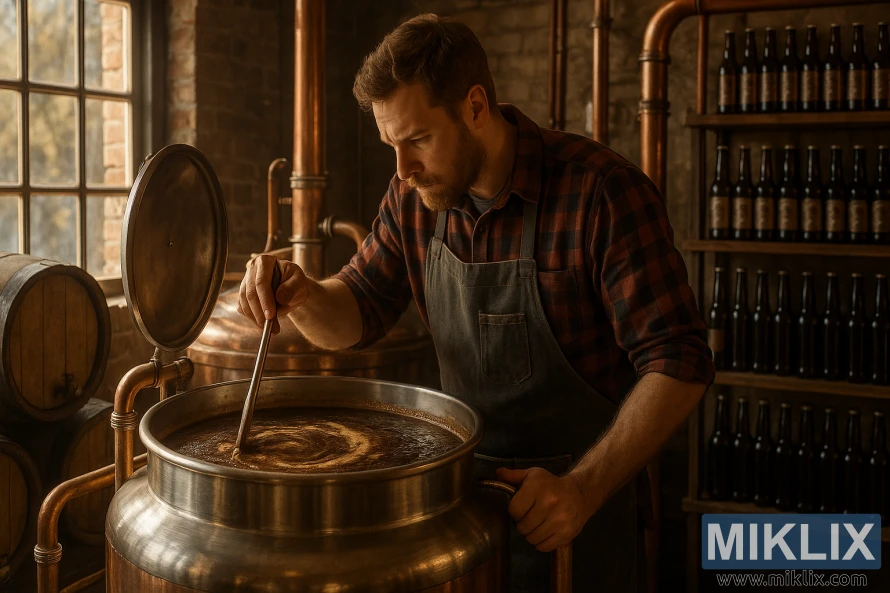
Key Takeaways
- Chocolate malt adds rich, complex flavors to beer.
- It can be used in a variety of beer styles.
- The flavor profile includes notes of chocolate, coffee, and nuts.
- Proper usage rates are critical for achieving the desired flavor.
- Chocolate malt can enhance the overall character of the beer.
Understanding Chocolate Malt in Beer Brewing
Chocolate malt, derived from roasted malted barley, is a key ingredient in brewing diverse beers. It's made by roasting malted barley to a higher temperature than other malts. This process gives it a distinct flavor and color.
The roasting of chocolate malt is precise to achieve the perfect flavor. It can taste like chocolate, coffee, and nuts. The roasting level can be adjusted, allowing brewers to pick the malt that fits their beer's style.
Chocolate malt adds depth and complexity to various beers. It's a favorite in dark ales, stouts, and porters. Its dark color enhances the beer's appearance, making it rich and inviting.
For brewers aiming to use chocolate malt, understanding its characteristics is essential. By choosing the right type and amount, they can boost their beer's flavor, aroma, and character.
The Distinct Flavor Profile of Chocolate Malt Beer
Brewing with chocolate malt results in a beer with a unique taste. It often includes chocolate, coffee, and nutty notes. This distinct flavor comes from the complex compounds formed during malting.
The aroma of chocolate malt beer is rich, with roasted coffee and dark chocolate notes. When you taste it, the beer's flavor profile opens up. It reveals a rich mix of roasted flavors, with hints of nuts and caramel.
The finish of chocolate malt beer is smooth, with a lingering roasted taste. This complements the beer's overall character. The flavor profile can vary greatly, depending on the beer style. Stouts and porters are prime examples where chocolate malt is a key ingredient.
Brewing techniques are vital in shaping the flavor of chocolate malt beer. The mashing temperature, brewing time, and the amount of chocolate malt used all impact the final taste.
- The amount of chocolate malt used can greatly affect the roasted flavors.
- Mashing temperatures influence the sugars extracted, affecting the beer's body and taste.
- Brewing time impacts the extraction of compounds from the chocolate malt, shaping the beer's character.
Understanding these factors helps brewers fine-tune their chocolate malt beer's flavor. By adjusting brewing techniques and ingredient ratios, brewers can craft a variety of beer styles. These showcase the unique qualities of chocolate malt.
How Chocolate Malt is Made
The creation of chocolate malt involves a detailed process, including malting, roasting, and milling. This multi-step journey requires precise attention to temperature and time. It's a complex endeavor that demands meticulous care.
The malting phase starts with soaking barley in water to activate enzymes. This is followed by germination, which breaks down the grain's starches into fermentable sugars. The germinated barley is then dried, halting germination and resulting in malted barley.
The malted barley undergoes roasting to achieve the distinctive flavor and color of chocolate malt. This process heats the malt to high temperatures, usually between 350°F to 450°F. The goal is to reach the perfect roast level, which can vary based on the desired taste.
The roasting stage is critical in shaping the final flavor and aroma of the beer. A longer roasting time can lead to a deeper, richer taste. On the other hand, a shorter roasting time can result in a lighter, more subtle flavor.
- The type of barley used can affect the flavor profile of the chocolate malt.
- The level of roast can impact the beer's color and flavor.
- The roasting technique can influence the beer's overall character.
By meticulously controlling the malting, roasting, and milling steps, brewers can craft high-quality chocolate malt. This malt enhances the depth and complexity of their beers.
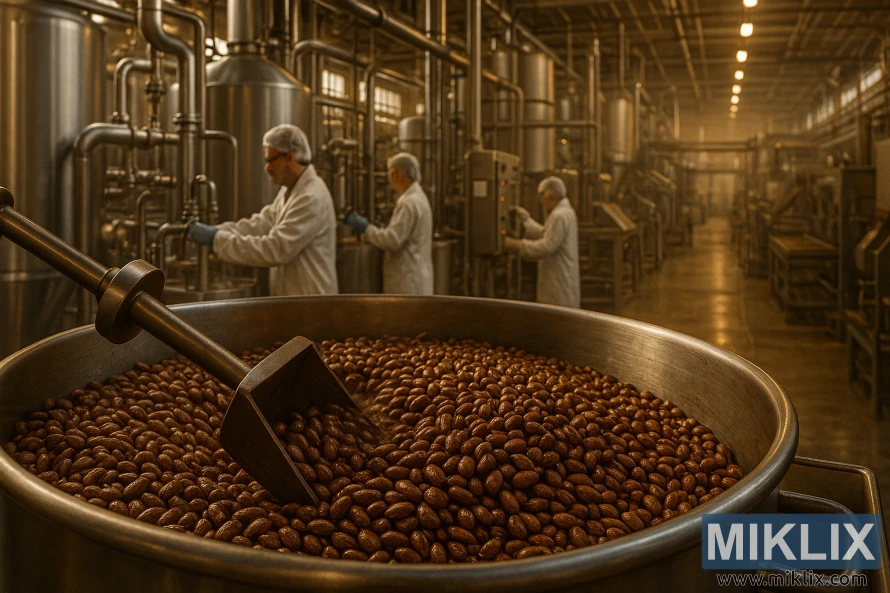
Comparing Different Chocolate Malt Varieties
Exploring the various types of chocolate malt reveals a complex landscape of flavors and colors for brewers to master. Chocolate malt is a staple in brewing, known for its ability to add depth and complexity to beer. The differences between various chocolate malt varieties can significantly impact the final product's flavor profile and color.
Several factors affect the flavor and color of chocolate malt. These include the type of barley used, the malting process, and the roasting level. For instance, some chocolate malts are made from roasted unmalted or malted barley. This can impart different characteristics to the beer.
The usage rate and brewing techniques also play a critical role. A higher usage rate of chocolate malt can result in a deeper brown to dark chocolate color. This depends on the brewing techniques employed.
Here are some key differences between various chocolate malt varieties:
- Flavor Profile: Different chocolate malts can impart flavors ranging from coffee and nuts to dark chocolate and caramel.
- Color: The color can vary from deep brown to almost black, depending on the roast level and usage rate.
- Roast Level: The roast level can significantly affect the flavor, with lighter roasts often providing more nuanced flavors. Darker roasts offer a more intense, roasted taste.
Understanding these differences is critical for brewers to achieve the desired flavor profile and color in their beers. By comparing and contrasting different chocolate malt varieties, brewers can make informed decisions about which type to use in their recipes.
Essential Equipment for Brewing with Chocolate Malt
Brewing with chocolate malt requires careful attention to the equipment used. A variety of gear is needed, from brew kettles and fermenters to mash tuns and conditioning tanks.
Firstly, a high-quality brew kettle is critical. It's where malt extract or grains are boiled with hops to create the wort. When selecting a brew kettle, consider the material and size. Stainless steel is favored for its durability and resistance to corrosion.
The mash tun is another essential piece of equipment. It's used for mashing, steeping grains in hot water to extract fermentable sugars. For chocolate malt, precise temperature control is vital to bring out the desired flavors.
Here are some key equipment considerations for brewing with chocolate malt:
- Sanitation equipment to prevent contamination
- Temperature control systems for precise mashing and fermentation
- Monitoring equipment, such as hydrometers and thermometers
- Fermenters and conditioning tanks for fermentation and maturation
Investing in the right brewing equipment can significantly impact the quality of your beer. Understanding the role of each piece of equipment and its contribution to the brewing process is key. This allows brewers to better control the flavor profile of their chocolate malt beers.
Step-by-Step Mashing Techniques
Mashing is a critical step in brewing, needing precision, mainly with specialty malts like chocolate malt. It involves mixing milled grains with hot water to extract fermentable sugars, creating a liquid called wort.
The mash temperature is key, influencing enzyme activity that breaks down starches into fermentable sugars. For chocolate malt, a temperature between 152°F and 155°F is recommended for the best extraction.
Water quality also plays a significant role in the mash. The flavor of the final product can be greatly affected by water chemistry. Adjusting the water's mineral profile to match the chocolate malt is essential. This might involve adding brewing salts to achieve the right balance.
The grain-to-water ratio is another critical factor. A ratio that's too high can make the mash too thick, leading to inefficient extraction. On the other hand, a ratio that's too low can result in a thin mash, risking flavor loss. A ratio of about 1.25 quarts of water per pound of grain is often a good starting point for chocolate malt brewing.
Here's a step-by-step guide to mashing with chocolate malt:
- Heat your brewing water to the desired temperature, considering the grain-to-water ratio and target mash temperature.
- Mix the milled chocolate malt with the hot water in your mash tun, ensuring the grain is fully saturated.
- Maintain the mash at the optimal temperature for the recommended rest period, usually around 60 minutes.
- Monitor the mash temperature closely to prevent it from deviating from the target range.
- After the rest period, proceed with sparging to extract the wort, being careful not to over-sparge, which can lead to the extraction of unwanted compounds.
By carefully controlling these variables, brewers can optimize their mashing process to bring out the best flavors in their chocolate malt beers.
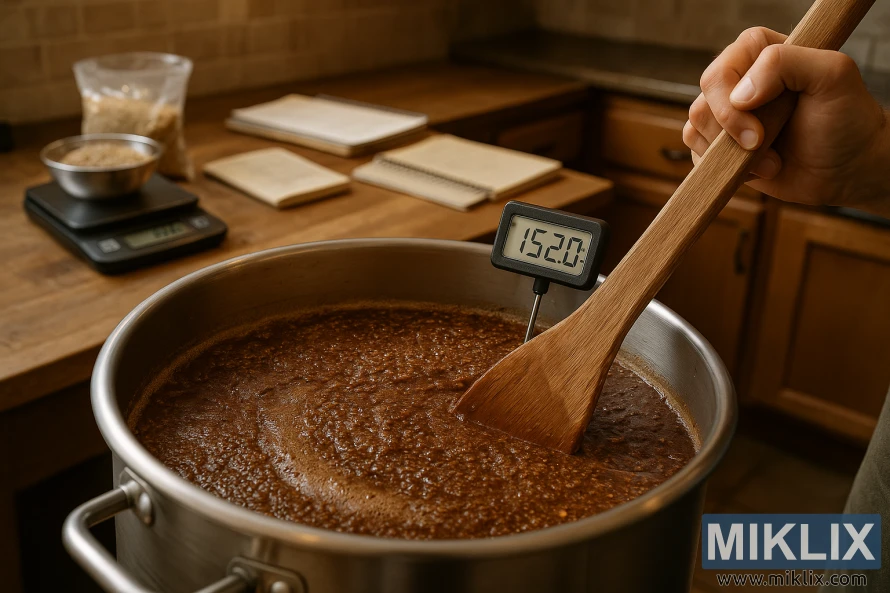
Best Practices for Adding Chocolate Malt to Your Brew
Introducing chocolate malt to your beer recipe can significantly enhance the flavor. Yet, it demands a thoughtful approach to usage rates and techniques. Chocolate malt brings a profound, deep flavor to your brew. But, excessive use can result in an unbalanced taste.
Brewing experts suggest using chocolate malt at a 5-10% rate of the total grain bill. This translates to 5-10 pounds of chocolate malt for every 100 pounds of grain. The optimal usage rate, though, can vary based on the beer style and the desired flavor.
When incorporating chocolate malt into your brew, certain techniques are key. Here are some best practices to adhere to:
- Start with a small amount: Begin with a small percentage of chocolate malt and adjust to taste.
- Balance with other grains: Balance the flavor of chocolate malt with other grains in your recipe.
- Consider the beer style: Different beer styles require different levels of chocolate malt.
By adhering to these best practices and understanding the usage rates and techniques for adding chocolate malt, you can craft a rich, complex beer. This beer will showcase the unique flavor profile of this versatile ingredient.
Common Mistakes When Using Chocolate Malt
Chocolate malt brings depth and complexity to beer, but its use demands careful attention to avoid common errors. Brewers must consider several factors when using chocolate malt. This is to achieve the desired flavor and color in their brews.
One frequent mistake is over- or under-extraction. Over-extraction can result in a bitter or astringent taste. On the other hand, under-extraction may lead to a lack of flavor. To prevent this, brewers should closely monitor their mashing techniques and make necessary adjustments.
Other common errors include using too much chocolate malt. This can overwhelm the beer's flavor. Also, not storing the malt properly can impact its quality. By recognizing these pitfalls, brewers can take preventive measures. This ensures the production of high-quality beers.
- Monitor mashing techniques to avoid over- or under-extraction.
- Use chocolate malt in moderation to avoid overpowering the beer's flavor.
- Store chocolate malt properly to maintain its quality.
Understanding and avoiding these common mistakes allows brewers to fully utilize chocolate malt. This way, they can craft complex, flavorful beers.
Pairing Chocolate Malt with Other Grains
The art of brewing with chocolate malt requires understanding how to pair it with other grains. By combining chocolate malt with complementary grains, brewers can achieve complex and interesting flavor profiles in their beers.
When selecting grains to pair with chocolate malt, consider the flavor characteristics you wish to emphasize. For instance, pairing chocolate malt with pale malt can create a balanced flavor. Combining it with Munich malt can enhance the maltiness and complexity of the beer.
- Pair chocolate malt with wheat malt for a refreshing and fruity beer.
- Combine chocolate malt with rye malt for a spicy and dry finish.
- Blend chocolate malt with caramel malt to add sweetness and depth.
Experimenting with different grain combinations is key to finding the perfect balance for your beer. Start with small batches and adjust the proportions of chocolate malt to other grains based on your taste preferences.
By mastering the art of pairing chocolate malt with other grains, brewers can create a wide range of beer styles with unique and complex flavor profiles. Whether you're brewing a stout, porter, or amber ale, the right grain combination can elevate your beer to the next level.
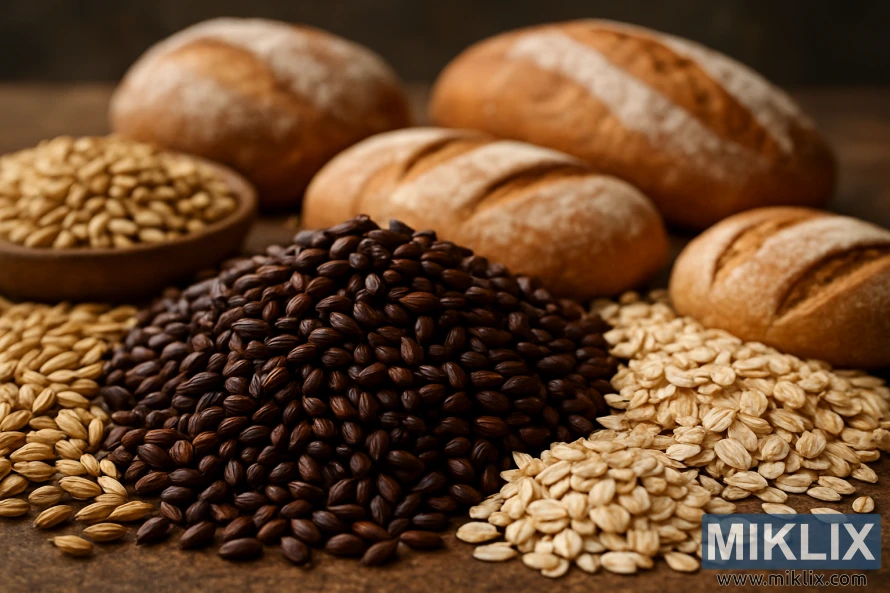
Popular Beer Styles Using Chocolate Malt
Stouts, porters, and brown ales frequently incorporate chocolate malt for their unique taste. This malt brings a rich, deep flavor, enriching the beer's character.
Stouts are a prime example of beers that benefit from chocolate malt. Its dark, roasted taste enhances the beer's coffee and chocolate notes, resulting in a complex yet balanced flavor.
Porters also gain from chocolate malt, adding depth and warmth to their flavor. The malt's chocolate notes blend well with the beer's roasted and nutty flavors, making it smooth and enjoyable to drink.
Brown ales are another style that appreciates chocolate malt. The malt's nutty and chocolate flavors complement the beer's malty sweetness, creating a balanced and refreshing taste.
Some breweries also explore using chocolate malt in red ales and amber ales. Its versatility makes it a valuable ingredient in various brewing endeavors.
- Stouts: Rich, dark flavor with roasted coffee and chocolate notes
- Porters: Deep, complex flavor with roasted and nutty notes
- Brown ales: Balanced, malty flavor with nutty and chocolate notes
Recipe Development and Adjustment Tips
The success of a chocolate malt beer hinges on meticulous recipe development and the flexibility to tweak it as needed. Understanding how chocolate malt interacts with other ingredients in your recipe is critical.
Begin by considering the type of chocolate malt you're using. Its flavor impact can vary greatly. Some malts offer deep, rich chocolate notes, while others provide subtle, roasted undertones.
- Balance is key: Make sure the chocolate malt flavor is balanced by other ingredients in your recipe.
- Experiment with ratios: Adjust the chocolate malt to other malts to find the perfect flavor balance.
- Consider brewing techniques: Mashing methods, boil times, and fermentation temperatures all affect the beer's flavor.
Adjustments are a fundamental part of recipe development. Be ready to refine your recipe based on your initial brews. This might mean adjusting the chocolate malt amount, changing hops, or altering your brewing technique.
Through careful recipe development and adjustments, you can craft a unique, delectable chocolate malt beer. This beer will highlight the rich, complex flavors that chocolate malt brings to the table.
Troubleshooting Your Chocolate Malt Brew
Troubleshooting is essential when brewing with chocolate malt. It helps identify and solve common problems that can impact your beer's quality.
Several issues can occur when using chocolate malt. These include inconsistent flavor, an overpowering chocolate taste, and problems with the mash or sparge.
Inconsistent flavor is a common problem. It might stem from the chocolate malt's quality or brewing process issues. To tackle this, check the chocolate malt's freshness and quality first.
- Check the chocolate malt for freshness and quality.
- Verify that the mash temperature is consistent and within the recommended range.
- Ensure that the sparge water is at the correct temperature and pH.
An overpowering chocolate flavor is another issue brewers face. To fix this, adjust the chocolate malt amount in your recipe. You can also blend it with other malts for a balanced taste.
- Reduce the amount of chocolate malt in the recipe.
- Blend the chocolate malt with other specialty malts to balance the flavor.
- Adjust the brewing process to extract less flavor from the chocolate malt.
By understanding and addressing these common issues, brewers can enhance the quality and consistency of their chocolate malt brews.
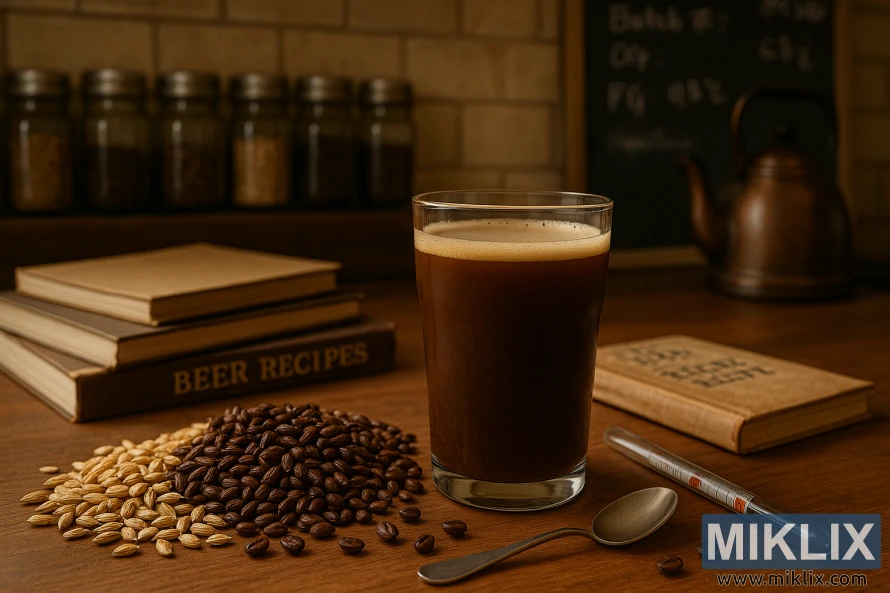
Storage and Handling of Chocolate Malt
Proper storage and handling of chocolate malt are key to preserving its quality and flavor. This specialty malt is sensitive to moisture, light, and temperature. These factors can significantly impact its taste and aroma.
To keep chocolate malt in top condition, store it in a cool, dry spot. High temperatures and humidity can cause it to degrade. This results in a loss of its unique flavor and aroma. Here are some tips for storing chocolate malt:
- Store in airtight containers to prevent moisture absorption.
- Keep the storage area away from direct sunlight.
- Maintain a consistent refrigerator temperature below 70°F (21°C) if storing long-term.
When handling chocolate malt, it's important to be careful. This prevents damage and contamination. Here are some handling tips:
- Use clean equipment to prevent contamination.
- Avoid crushing or grinding the malt excessively, as this can lead to loss of flavor and aroma.
- Minimize exposure to air to prevent oxidation.
By adhering to these storage and handling guidelines, you can ensure your chocolate malt stays fresh. It will retain its distinct flavor, leading to a better-tasting beer.
Commercial Examples and Inspiration
The use of chocolate malt in brewing has sparked a new era in craft beers. It offers brewers a versatile ingredient to explore and experiment with.
Several renowned breweries have successfully incorporated chocolate malt into their recipes. This has led to a wide range of flavors and styles. For example, some breweries use it to create robust stouts and porters. Others blend it with other malts to produce complex ales.
- Breweries like Youngstown Brewing Company and Great Lakes Brewing Company have crafted beers that showcase the rich, chocolatey flavor of chocolate malt.
- The use of chocolate malt in seasonal beers, such as winter stouts, has become popular. It offers a warm, comforting flavor profile.
These commercial examples inspire brewers to experiment with chocolate malt. By understanding how different breweries use this ingredient, brewers can gain insights into creating their own unique recipes.
For inspiration, exploring the flavor profiles and brewing techniques of established breweries is a good starting point. This can help in developing new and innovative beer styles. Such styles can stand out in the craft beer market.
Conclusion
Mastering brewing with chocolate malt is a journey that demands practice, patience, and a keen eye for detail. By grasping the distinct flavor profile of chocolate malt and its production, brewers can explore new avenues for their beers.
To achieve the best outcomes, it's critical to choose the right chocolate malt variety and use it at the optimal rate. Pairing it with complementary grains is also essential. Experimenting with different brewing techniques and recipes can further hone your skills.
As you continue brewing with chocolate malt, remember that success hinges on balancing flavors and being attentive to the brewing process. With dedication and practice, you'll craft complex, rich beers that highlight chocolate malt's unique characteristics.
Further Reading
If you enjoyed this post, you may also like these suggestions:
